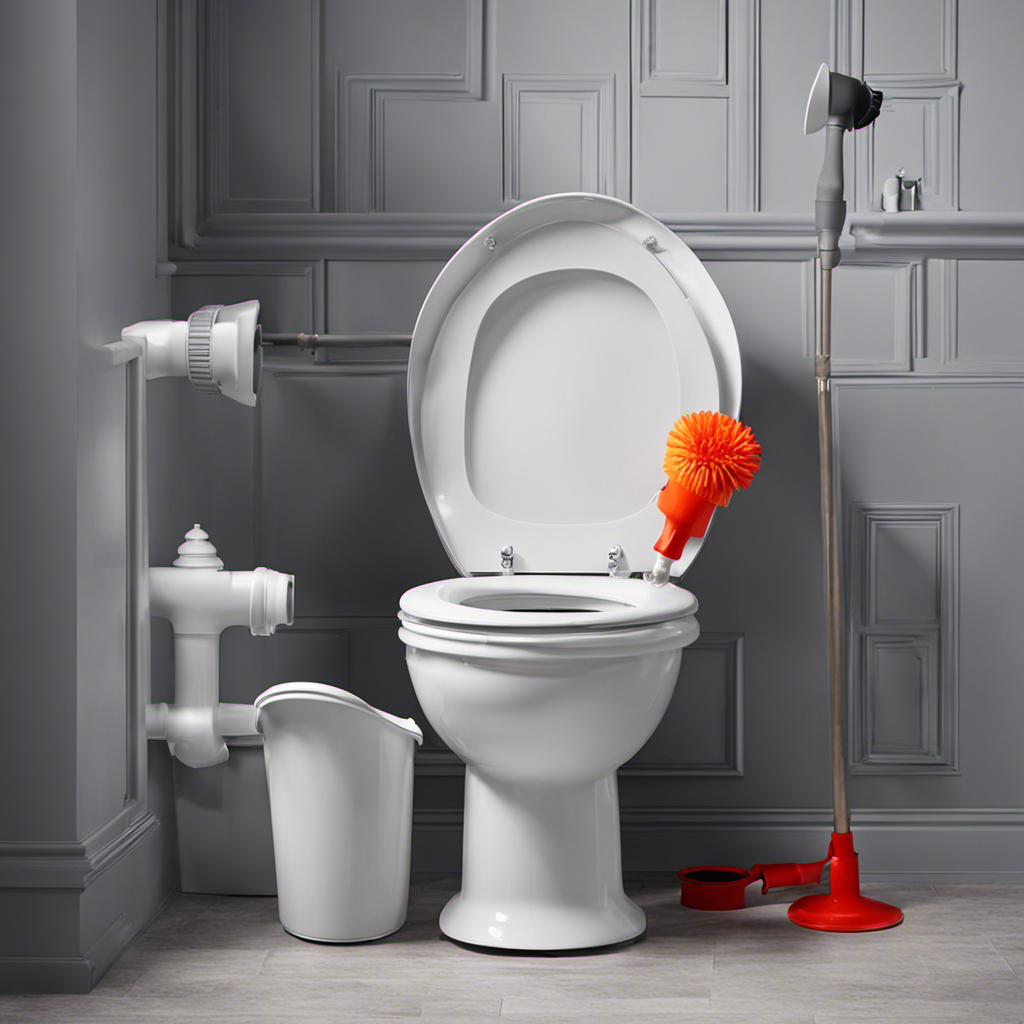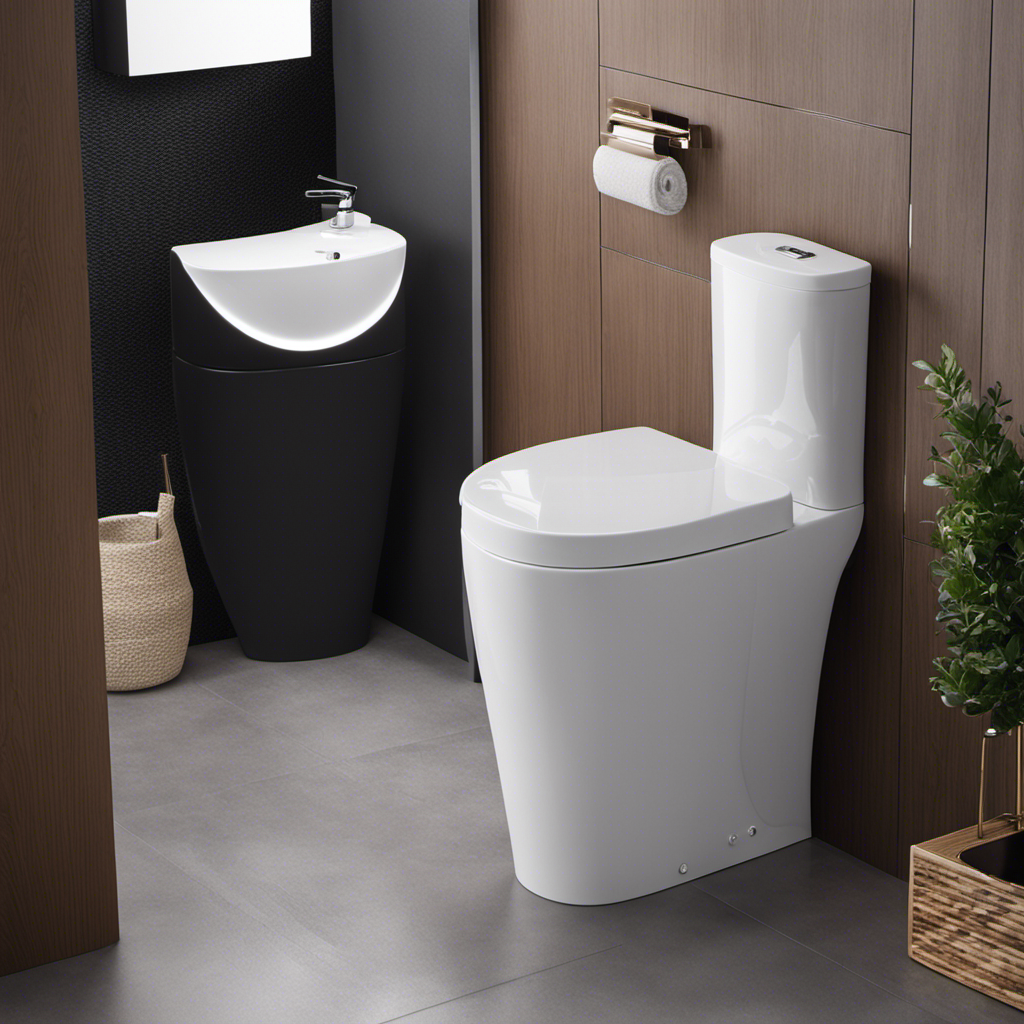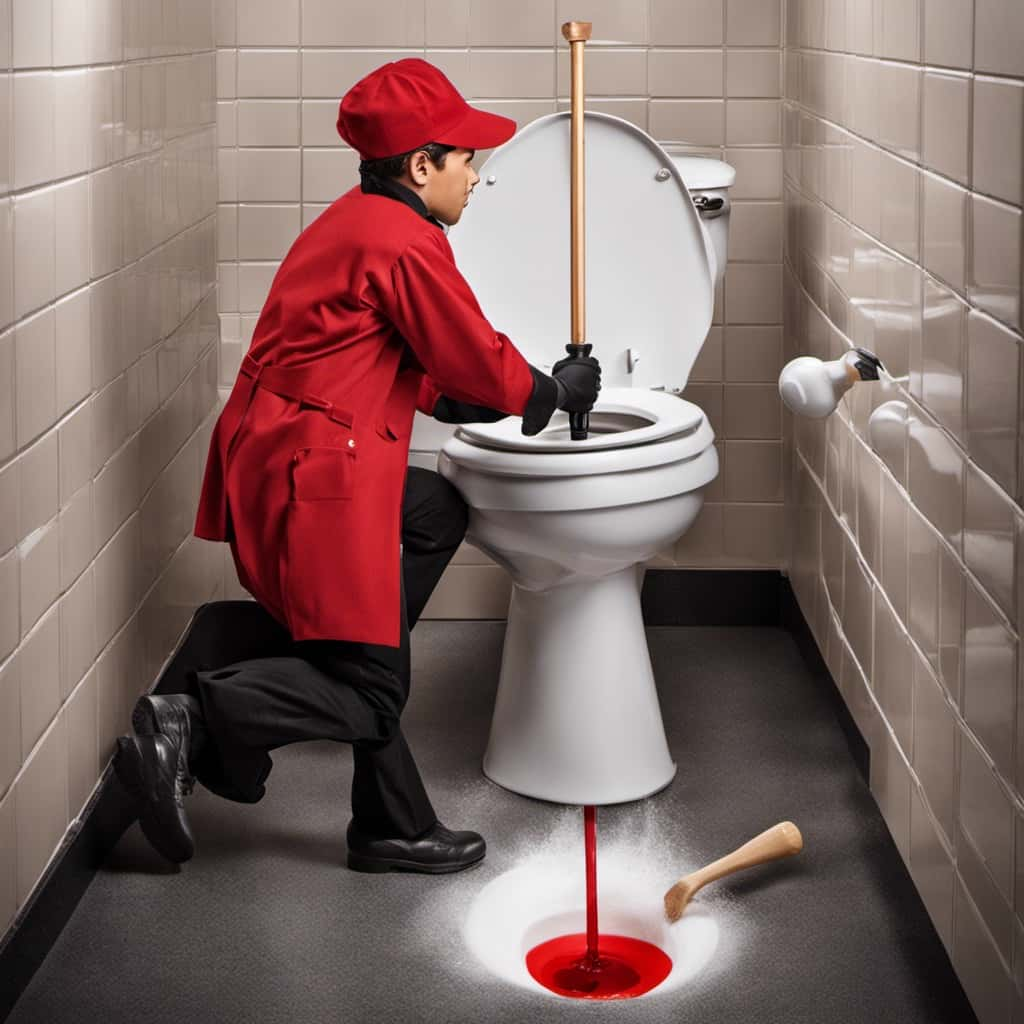Are you dreading the task of removing your toilet? Don’t worry, we’ve got you covered.
In this article, we will guide you through the step-by-step process of draining a toilet for removal. By following our instructions and taking necessary safety precautions, you’ll be able to confidently complete this task.
With the right tools and a little elbow grease, you’ll have your toilet removed in no time. So let’s get started and make this process as smooth as possible.
Key Takeaways
- Wear gloves and goggles for protection
- Use a plunger or toilet auger to dislodge clogs
- Shut off the main water supply and drain remaining water from pipes
- Disconnect the water supply and remove the toilet bowl
Safety Precautions
Before you start, make sure you wear gloves and goggles to protect yourself from any potential hazards while draining the toilet. It is crucial to have the proper equipment to ensure your safety.
Gloves will protect your hands from any harmful substances that may be present in the toilet, while goggles will shield your eyes from splashes or sprays that could cause irritation or infection.
Additionally, it is important to handle waste with caution. Use a sturdy plunger or a toilet auger to dislodge any clogs before attempting to drain the toilet.
When removing the toilet, be mindful of any waste that may spill out, and have a plastic bag or bucket ready to collect it. Remember to dispose of the waste properly, following your local regulations.
Gather Necessary Tools
Make sure you’ve got all the tools you need before you start this process. The toilet removal process can be a messy and challenging task, but with the right equipment, it becomes much easier. Here are the necessary tools you’ll need:
- Wrench: This will help you loosen and remove the nuts that hold the toilet in place.
- Bucket: You’ll need a bucket to catch any water that may spill during the removal process.
- Putty Knife: This tool will come in handy for scraping off any old wax or caulk around the base of the toilet.
- Gloves: It’s important to protect your hands from any potential hazards, such as sharp edges or bacteria.
- Towels: Keep a few towels nearby to soak up any water or spills that may occur.
Having these tools on hand will ensure a smoother and more efficient toilet removal process.
Shut Off Water Supply
To successfully shut off the water supply, preventing any further water flow and isolating the water source, there are a few key points to keep in mind.
First, locate the main water shut-off valve, typically found near the water meter or where the water line enters your home. Turn the valve clockwise to shut off the water supply completely.
Next, it is important to prevent any water flow by opening faucets throughout the house to drain the remaining water in the pipes.
Lastly, make sure to isolate the water source by closing individual shut-off valves for toilets, sinks, and other fixtures, if applicable.
Following these steps will help you effectively shut off the water and avoid any potential water damage or leaks.
Shutting off Water
Once you’ve shut off the water, you can proceed with draining the toilet for removal. Before you begin, it’s important to prepare your workspace and be aware of how to handle any emergencies that may arise.
Here are some key points to keep in mind:
- Clear the area around the toilet to create enough space for maneuvering.
- Have a bucket and towels ready to catch any water that may spill during the process.
- Wear gloves to protect your hands from any potential bacteria or germs.
- Familiarize yourself with the location of the shut-off valve in case of any unexpected leaks.
- If you encounter any difficulties or concerns, don’t hesitate to reach out to a professional plumber for assistance.
Preventing Water Flow
Before starting, it’s important to prevent the water from flowing by shutting off the valve. This step is crucial to avoid any leaks or water damage during the toilet removal process. To help you visualize the process, here is a table outlining the steps to prevent water flow:
| Step | Instructions |
|---|---|
| 1 | Locate the water shut-off valve near the base of the toilet. |
| 2 | Turn the valve clockwise to shut off the water supply. |
| 3 | Flush the toilet once to drain any remaining water in the bowl and tank. |
| 4 | Use a towel or sponge to soak up any excess water in the bowl or tank. |
Isolating Water Source
Make sure you locate and turn off the water shut-off valve near the base of the toilet to isolate the water source. This step is crucial in preventing leaks and water damage. By shutting off the water supply, you can avoid any potential flooding or costly repairs.
Here are five reasons why it’s important to isolate the water source:
-
Protect your home: Preventing leaks helps to safeguard your property from water damage, which can lead to structural issues and mold growth.
-
Save money: By taking this simple step, you can avoid the expenses associated with water damage repairs and high water bills.
-
Peace of mind: Knowing that you have prevented any potential leaks gives you the reassurance that your home is safe and secure.
-
Preserve the environment: By preventing leaks, you are conserving water and reducing waste, contributing to a more sustainable future.
-
Maintain your property value: By practicing water damage prevention, you are preserving the value of your home and ensuring its long-term durability.
Empty the Tank
To empty the tank, you’ll need to disconnect the water supply and flush the toilet to drain the remaining water. This is an important step in preparing your toilet for removal.
First, locate the water shut-off valve, usually located near the base of the toilet. Turn it clockwise to shut off the water supply.
Next, flush the toilet to remove as much water as possible. To ensure that the tank is completely empty, you can use a sponge or a towel to soak up any remaining water.
Make sure to have your cleaning supplies handy to wipe up any spills or drips.
Remove the Toilet Bowl
Once you’ve disconnected the water supply and emptied the tank, it’s time to remove the toilet bowl. This step requires careful handling and the right tools to ensure a successful removal.
Here are the techniques and equipment you’ll need:
-
Wrench: Use an adjustable wrench to loosen the nuts securing the toilet bowl to the floor.
-
Putty Knife: Gently slide a putty knife under the base of the toilet to break the seal between the bowl and the floor.
-
Bucket: Place a bucket nearby to catch any residual water that may spill during the removal process.
-
Old Towels: Lay down old towels around the toilet to prevent any damage to the floor or surrounding area.
-
Strong Helper: Enlist the help of a strong individual to assist you with lifting and safely carrying the toilet out of the bathroom.
Following these toilet removal techniques and using the appropriate equipment will make the task easier and prevent any potential accidents or damage.
Clean Up and Dispose of Waste
When it comes to cleaning up and disposing of waste, there are several key points to keep in mind.
First, you need to consider your waste disposal options. Whether it’s recycling, composting, or disposing of hazardous materials, knowing the proper channels for each type of waste is crucial.
Second, it’s important to take safety precautions during cleanup to protect yourself and others from potential harm. This includes wearing protective gear, properly ventilating the area, and following any specific guidelines for handling hazardous waste.
Lastly, proper waste handling is essential to ensure that waste is disposed of in a responsible and environmentally friendly manner. This may involve separating different types of waste, using designated containers, and following any local regulations or guidelines.
Waste Disposal Options
There aren’t many waste disposal options for a toilet that needs to be removed. When it comes to disposing of waste from toilets, particularly composting toilets, you have limited choices. Here are some options to consider:
-
Composting: If you have a composting toilet, you can safely compost the waste, turning it into nutrient-rich soil for plants.
-
Sewage treatment facilities: In some areas, you may be able to take the waste to a local sewage treatment facility, where it will be professionally processed and treated.
-
Professional waste removal services: Hiring a professional waste removal service can ensure that the waste is properly disposed of according to regulations.
-
Landfills: Unfortunately, in some cases, the only option may be to dispose of the waste in a landfill. This should be a last resort, as it is not environmentally friendly.
Safety Precautions During Cleanup
It’s important to take safety precautions during cleanup to prevent the spread of bacteria and contaminants. When dealing with waste and sewage, it’s crucial to protect yourself and others from potential health hazards.
Here are some key safety measures to follow:
-
Wear appropriate protective gear, such as gloves, goggles, and a face mask, to shield yourself from direct contact with waste and harmful pathogens.
-
Use proper cleanup methods, including disinfecting surfaces with bleach or other approved cleaning agents.
-
Avoid cross-contamination by using separate cleaning tools for different areas and disposing of contaminated materials in sealed bags.
-
Wash your hands thoroughly with soap and water after completing the cleanup process.
Proper Waste Handling
To properly handle waste, make sure you are wearing gloves and using separate cleaning tools for different areas. Waste management is essential for maintaining a clean and healthy environment. Improper waste handling can have a significant environmental impact, causing pollution and harm to ecosystems.
Here are some important points to keep in mind:
- Reduce waste: Opt for reusable items and avoid excessive packaging.
- Separate waste: Sort your waste into different categories like recyclables, organic waste, and general waste.
- Recycle: Make sure to recycle materials such as paper, plastic, glass, and metal.
- Compost: Turn your organic waste into nutrient-rich compost for your garden.
- Dispose responsibly: Follow local guidelines for proper disposal of hazardous waste.
Conclusion
In conclusion, now that you’ve successfully drained your toilet for removal, you can rest assured knowing that you’ve achieved a task that may seem daunting to some.
By following the safety precautions and gathering the necessary tools, you were able to shut off the water supply and empty the tank with ease.
Removing the toilet bowl itself may have required some physical effort, but you persevered and accomplished the job.
Remember to clean up and dispose of waste properly, ensuring a clean and sanitary environment.
Your determination and resourcefulness have truly transformed you into a toilet removal expert!










